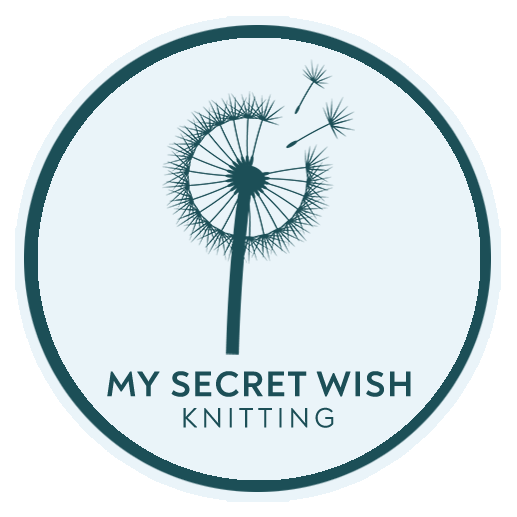Glossary and Terms
Refer to this master glossary for quick explanations of basic stitches and terms used in our patterns. (This document is still under construction.)
* to * or [ to ]: repeat between asterisks or brackets.
BincL (Bar Increase Left): Also referred to as k1fb, this makes a small bar across the trailing stitch in the increase. Knit into the front loop and then the back loop of the same stitch before pulling off the needle.
BincR (Bar Increase Right): The mirror of the k1fb, this increase makes a bar across the leading stitch in the increase. Slip the next stitch knitwise and slip it straight back to the non-working needle; knit into the trailing leg (which is now in front) but do not slip off the needle; move non-working needle beneath working needle to pick up the front leg of the original stitch, then knit into back leg of picked-up stitch to work into it for a second time. See my video tutorial here: Right-Leaning Bar Increase.
CCD (central chain decrease): slip two stitches together knitwise, slip next stitch knitwise, insert non-working needle into all three stitches from your non-dominant side and knit together.
DCD (double central decrease): slip stitch knitwise, k2tog, pass slipped stitch over.
k: knit.
k2tog (knit two together): knit two stitches together as one.
knitwise: insert your needle as though to knit.
leading leg or stitch: the leg or stitch closest to the side of your work matching your dominant hand.
M1L (Make One Left-Leaning Stitch): Make one stitch leaning away from your dominant hand by picking up the bar between stitches and placing on non-working needle with leading leg in front, then knitting into the back loop, which creates a twist as it drops from needle. (Note that if you’re knitting left-handed, this will actually lean right.)
M1R (Make One Right-Leaning Stitch): Make one stitch leaning toward your dominant hand by picking up the bar between stitches and placing on non-working needle with trailing leg in front, then knitting into the front loop, which creates a twist as it drops from needle. (Note that if you’re knitting left-handed, this will actually lean left.)
non-working needle: the needle in your non-dominant hand that you’re creating new stitches from.
p: purl.
p2tog (purl two together): purl two stitches together as one.
pass slipped stitch over: Use the non-working needle to pick up the slipped stitch on the working needle and pass it back over the end of the needle and any stitches worked since it was slipped.
purlwise: insert your needle as though to purl.
RS (Right Side): the right side of the fabric, or the outside of the garment.
slip stitch: insert working needle into stitch purlwise (unless otherwise specified) and slip off non-working needle.
ssk (slip-slip-knit): slip two stitches knitwise to working needle one at a time, insert non-working needle tip through both stitches from trailing side, k2tog.
ssp (slip-slip-purl): slip two stitches knitwise to working needle one at a time, insert non-working needle tip through both stitches from trailing side, p2tog.
trailing leg or stitch: the leg or stitch closest to the side of your work matching your non-dominant hand.
working needle: the needle in your dominant hand that you’re working onto.
WS (Wrong Side): the wrong side of the fabric, or the inside of the garment.
xp2tog (twisted purl two together): slip next two stitches knitwise one at a time, insert non-working needle through front leg of both slipped stitches on working needle from the leading side of the work, slip both stitches together back to non-working needle, flipping them so the leading stitch is twisted in front of and around the trailing stitch (so it will now be trailing), p2tog.
Cable Stitches:
Note for lefties: Cables will slant in the opposite direction indicated. You’ll need to reverse the chart cable symbol to create the stitch you need.
2 / 1 LPC (Two-Over-One Left-Cross Purl Cable): Place two stitches on cable needle to front, purl one, knit two from cable needle.
2 / 1 RPC (Two-Over-One Right-Cross Purl Cable): Place one stitch on cable needle to back, knit two, purl one from cable needle.
2 / 2 LC (Two-Over-Two Left-Cross Cable): Place two stitches on cable needle to front, knit two, knit two from cable needle.
2 / 2 RC (Two-Over-Two Right-Cross Cable): Place two stitches on cable needle to back, knit two, knit two from cable needle.
3 / 3 LC (Three-Over-Three Left-Cross Cable): slip three stitches to cable needle and hold in front, knit three, knit three stitches from cable needle.
Special Stitches:
3-IN-1 PICKUP:
Work this when picking up stitches for the thumb from one cast-on stitch to help prevent gaps. For video, text, and picture tutorial, go here.
Round 1: Pick up and knit three stitches across cast-on edge. (Middle stitch should be worked into cast-on stitch.)
Round 2: Central Chain Decrease. Continue as per pattern.
